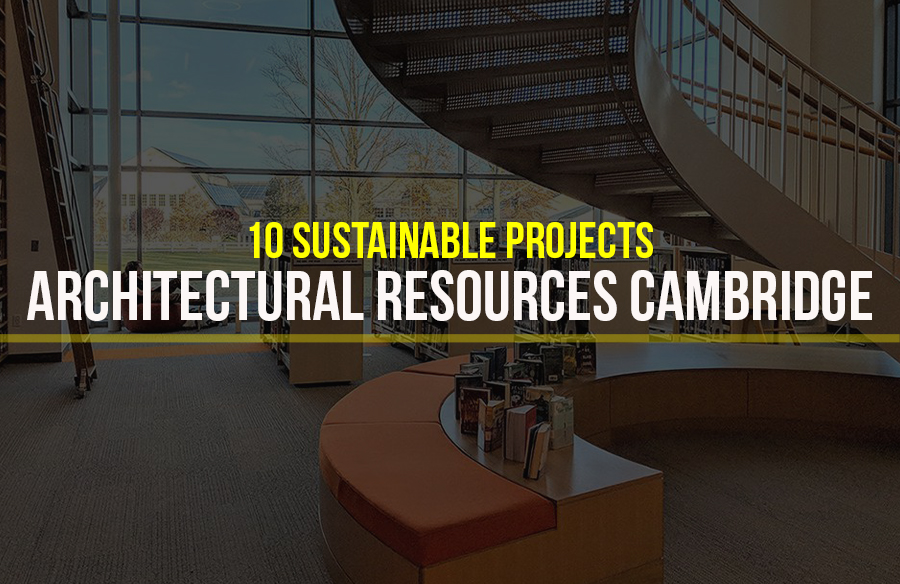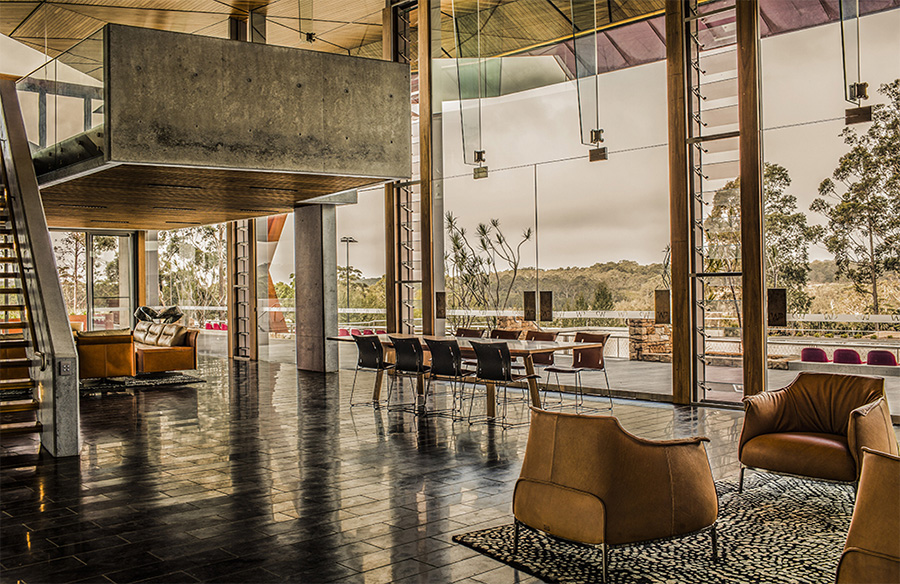The building industry accounts for nearly 40% of the global GHG emissions. With the world becoming more and more conscious of the growing negative impacts of climate change it becomes imperative to discuss methods to achieve energy efficient buildings.
Energy efficiency, as the name suggests is the efficient use of energy through various stages of building design and operation to conservation and optimization of energy usage to reduce wastage and minimize negative effects on the natural environment.
This can be achieved to a great extent by reducing the overall energy requirement of a building, by harnessing energy from renewable sources of energy, by reducing negative environmental impacts due to the energy consumption by a building and by ultimately avoiding any wastage of energy.
The following points may be followed to ensure energy efficiency in structures:
1. Conducting a detailed climate and site analysis-a preliminary design solution | Energy Efficient Buildings
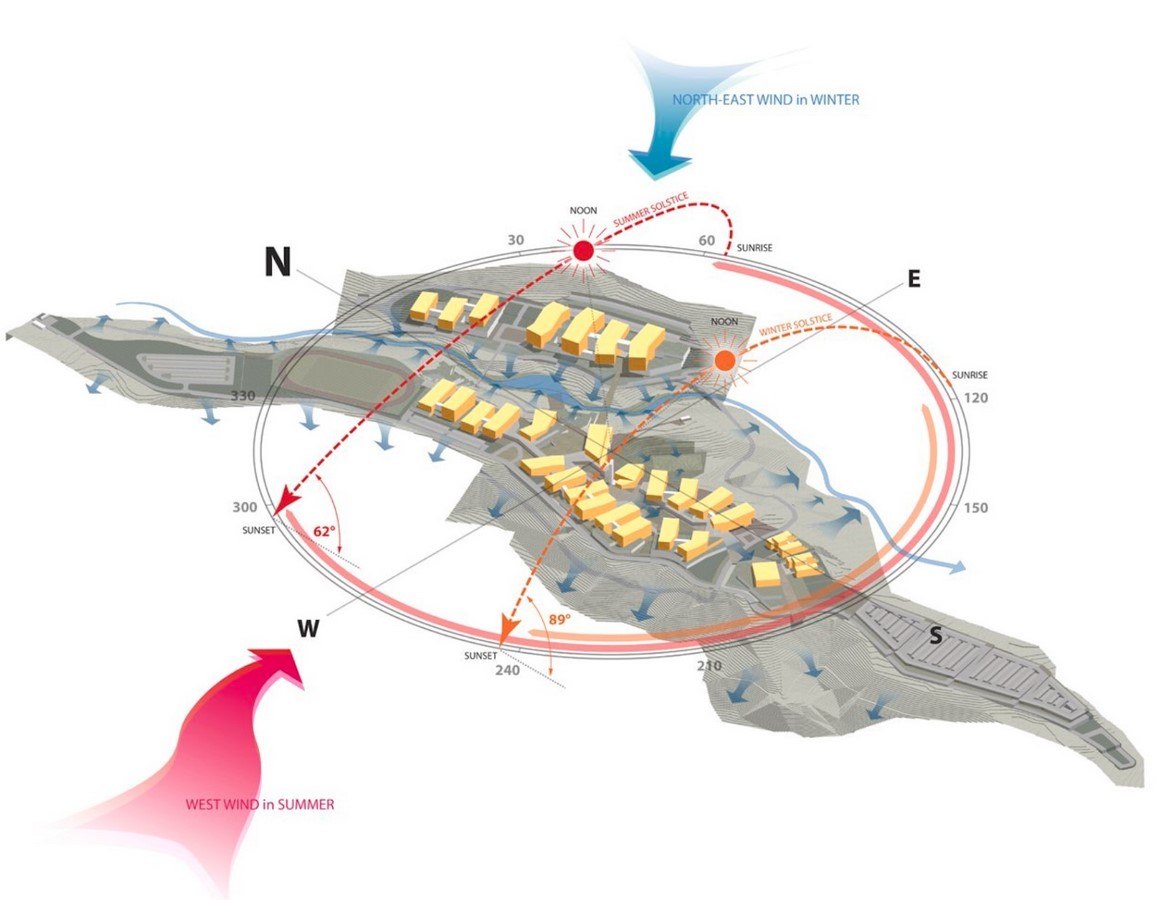
This may very well be the easiest way to address the goal of energy efficiency in any building being designed. Just as the human body adapts and adjusts to changing climate to ensure efficient functioning of the body, a built mass too should be able to respond well to the climate it is set in and to its immediate surroundings.
By conducting a thorough study on the local climate and the site and its features, a clear idea of the set of challenges that the built mass may have to face and respond to may be presented. It will help decide the orientation of the building, the materials available and how to source them to use (locally and regionally), resources available on site, the climatic factors that may affect the thermal performance of the building, the potential for daylighting, use of PV panels, etc.
2. Choosing the right walling material to achieve thermal comfort
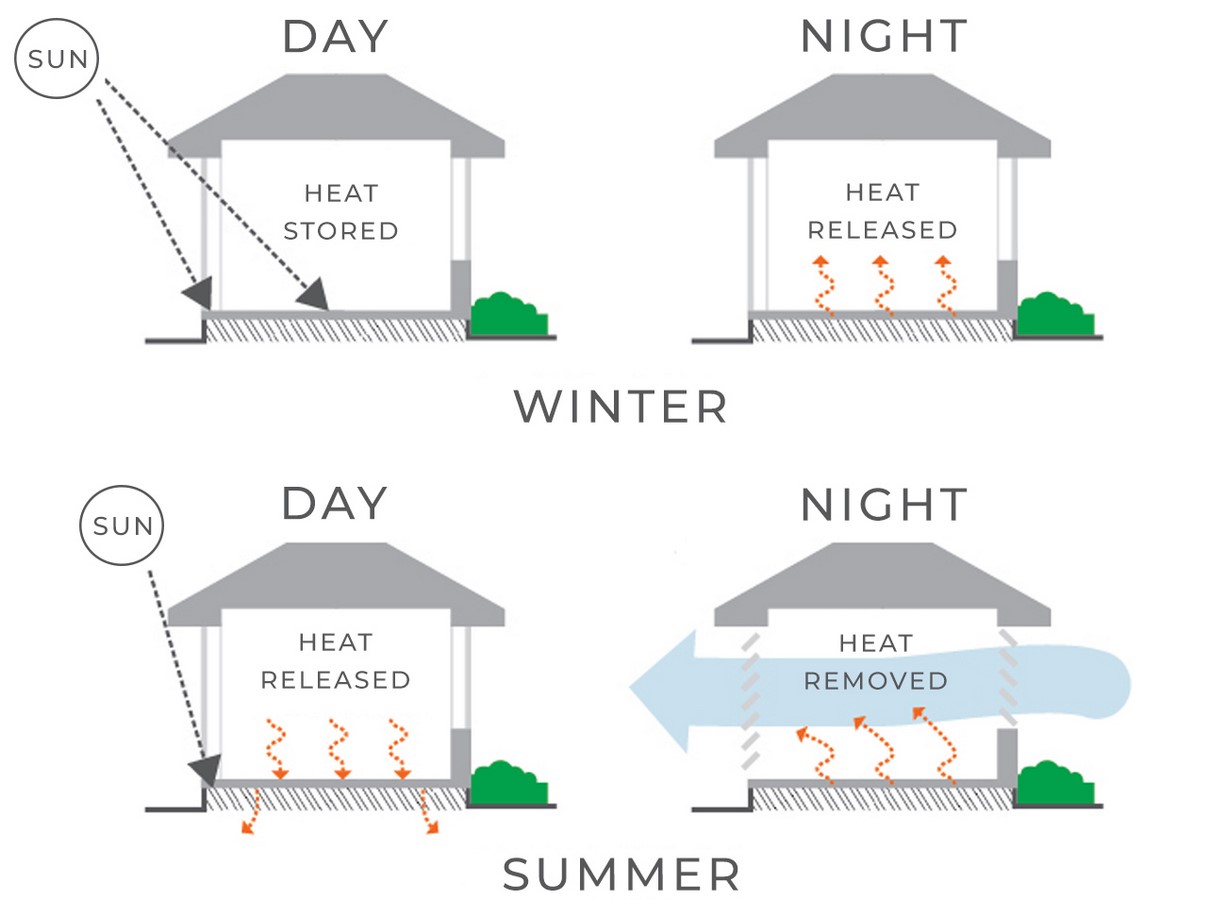
Once the study of the site and its climate has been conducted the next step would be to decide on a material for the main envelope of the building. The most common culprit of heavy energy demand in a building is the loss and gain of heat in a building through its envelope when not regulated properly.
Insulating the building—either by using a high thermal mass material, or by using a cavity wall, or by using metal wool-like insulation materials—will either preserve or reject the heat as the climate demands to ensure the most comfortable temperatures on the interiors of the building.
The more heat gained-in hot climates—and the more heat lost-in cold climates—the more is the demand for air conditioning inside the building leading to a surge in energy loads of the building.
3. Embodied energy and the life cycle of materials | Energy Efficient Buildings
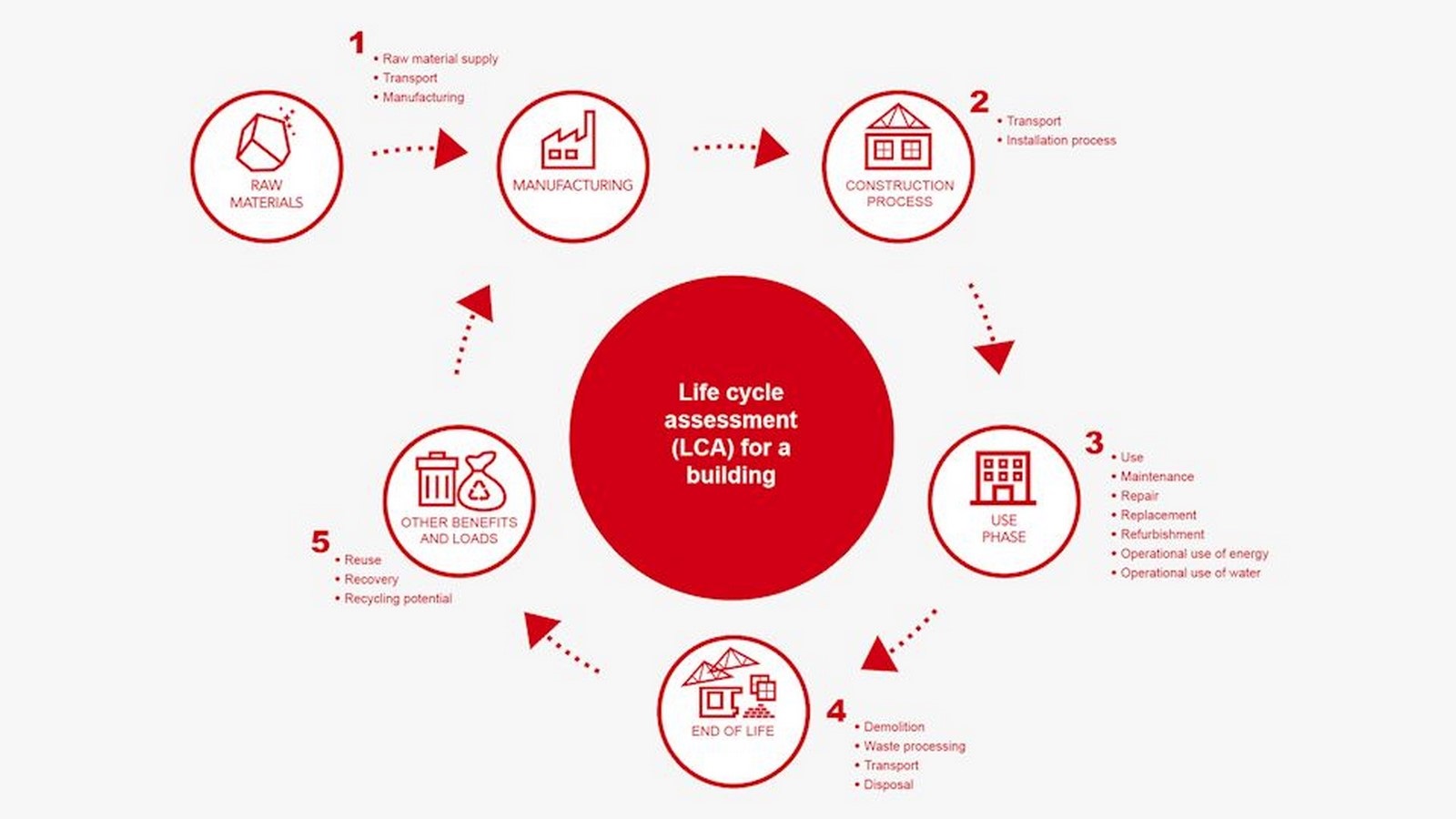
Energy efficiency is not restricted to operational energies only. It also needs to be addressed at the design, pre-construction, and construction stages of the building. Many materials that are commonly used today are produced from energy-intensive processes in bulk in factories that use massive amounts of non-renewable energy in the process of manufacturing.
These materials then have the added burden of being transported over long distances and need the usage of heavy energy-intensive equipment on-site for their assembly-ultimately increasing the overall energy demand and consumption.
By hosing materials that have low embodied energy (least processed), that are locally or regionally available, and using less energy-intensive construction methods the energy requirement can be reduced significantly.
What must also be remembered is how these materials will end their life cycle. The recyclability of those materials needs to be addressed to ensure minimum wastage and pollution caused by their disposal.
4. Using passive ventilation techniques

Ventilation is important in a building to initiate air exchanges in a building to circulate fresh air and keep out humidity. Taking inspiration from the multitude of vernacular building techniques present, passive ventilation techniques can significantly reduce the need and usage of mechanical energy-intensive air conditioning systems.
By studying the wind patterns occurring at the site, orientation, size, and position of windows and other apertures can be decided to ensure maximum cross ventilation and circulation of air between the indoors and outdoors and reduce the usage of mechanical ventilation.
Depending on the density of the surroundings techniques such as stack ventilation or passive downdraft cooling and evaporative cooling may be applied to achieve the ventilation requirements of any structure.
5. Using renewable energy sources and on-site energy generation | Energy Efficient Buildings

The operational energy demands of a building can be met by using several renewable resources and onsite energy generation techniques such as the use of PV (photovoltaic) panels, solar-powered devices to provide electricity.
For those structures with large rooftops, solar panels could be a good renewable energy source. Wind energy through micro wind turbines at the site, biomass energy generation, and geothermal energy sources too can be used as renewable on-site energy generators.
6. Optimizing daylighting
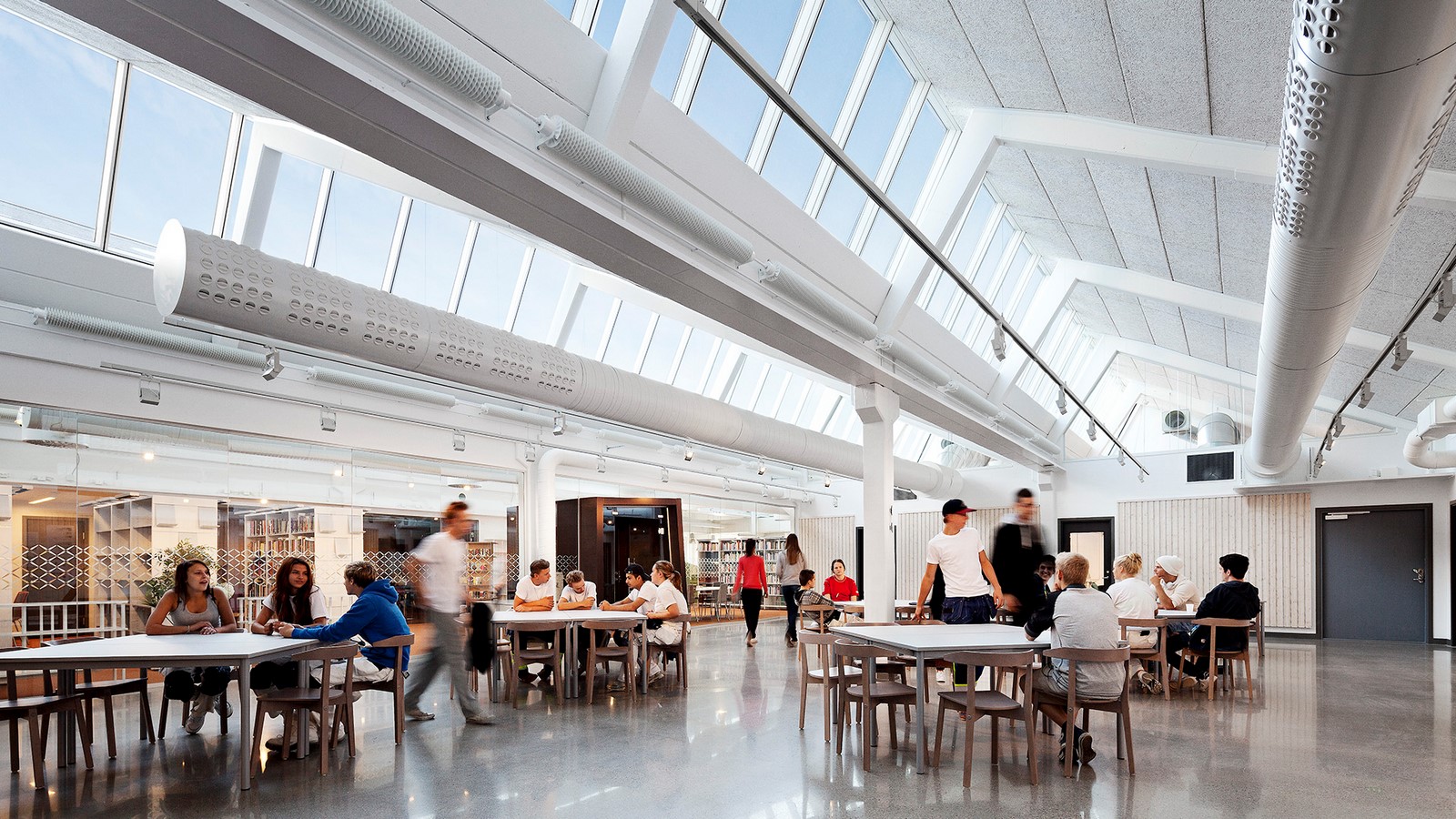
A significant contributor to the energy demand of a building is the lighting appliances on the interiors of buildings whose need arises when there is a lack of natural lighting. Orienting the building in the best direction possible to catch as much natural light as possible in the form of diffused lighting with a minimum heat gain component, will greatly reduce the requirement of artificial lighting.
7. Integrating landscape and vegetation

Trees can be used as shading devices that can adapt to seasons and act as both heat barriers as well as light shields and windows. When constructing a building on any site they are of the footprint of the building shutting out the vegetation that could have grown in its place.
That very top-soil that is excavated can be used to create roof gardens to create a cool roof that shades and absorbs heat and light and ensures comfortable interiors.
8. Using the right shading devices | Energy Efficient Buildings
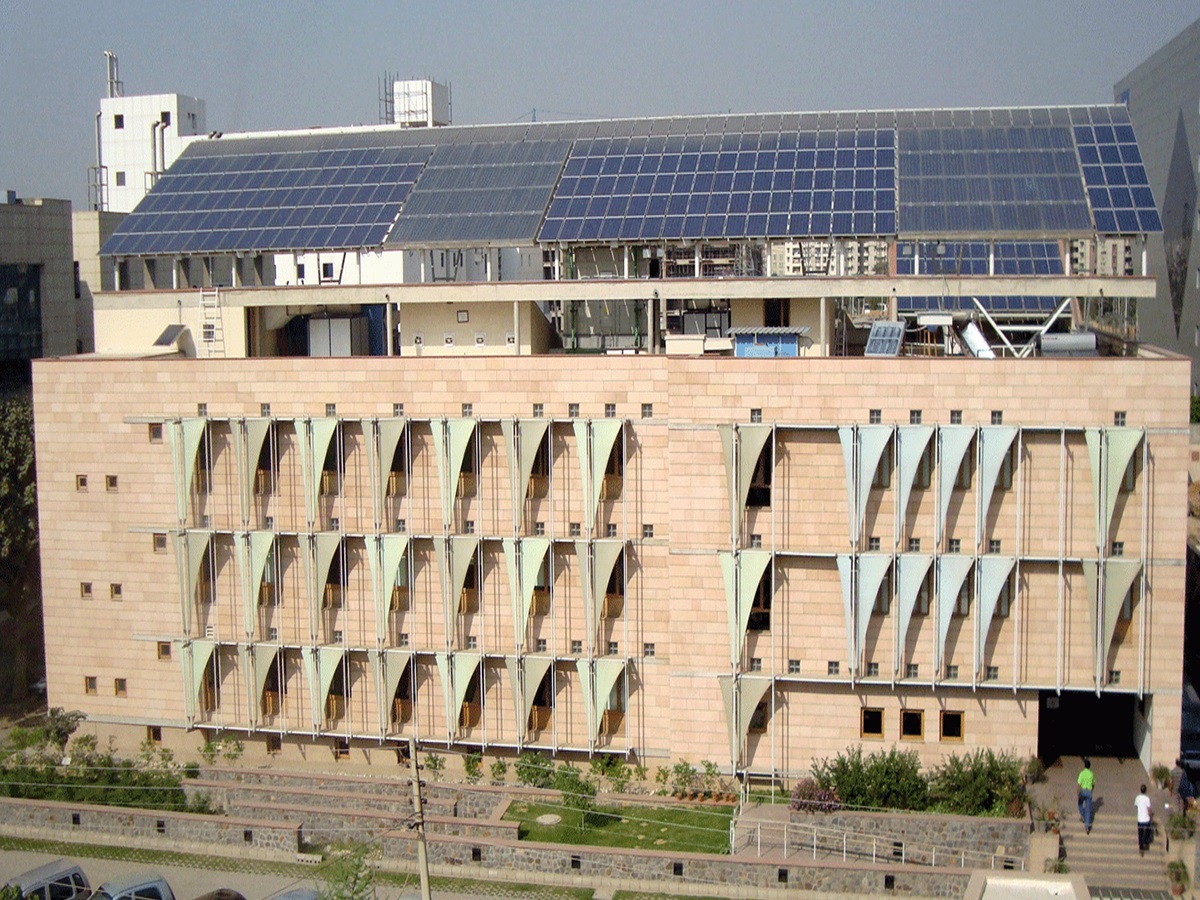
By giving large openings in facades to get maximum daylight a large portion of the wall is being made available for unnecessary heat to make its way through to the interiors. Since this is not ideal the use of shading decides outside the opening will control the heat gain.
By simply shading the windows and other openings with the right kind of shading devices a good quantity of natural light can be brought in to use in the interiors while keeping the heat out. Depending on the orientation of the windows either vertical, horizontal, light-weight, movable, or fixed shades can be used.
9. Adapting the Cradle-to-Cradle system of building
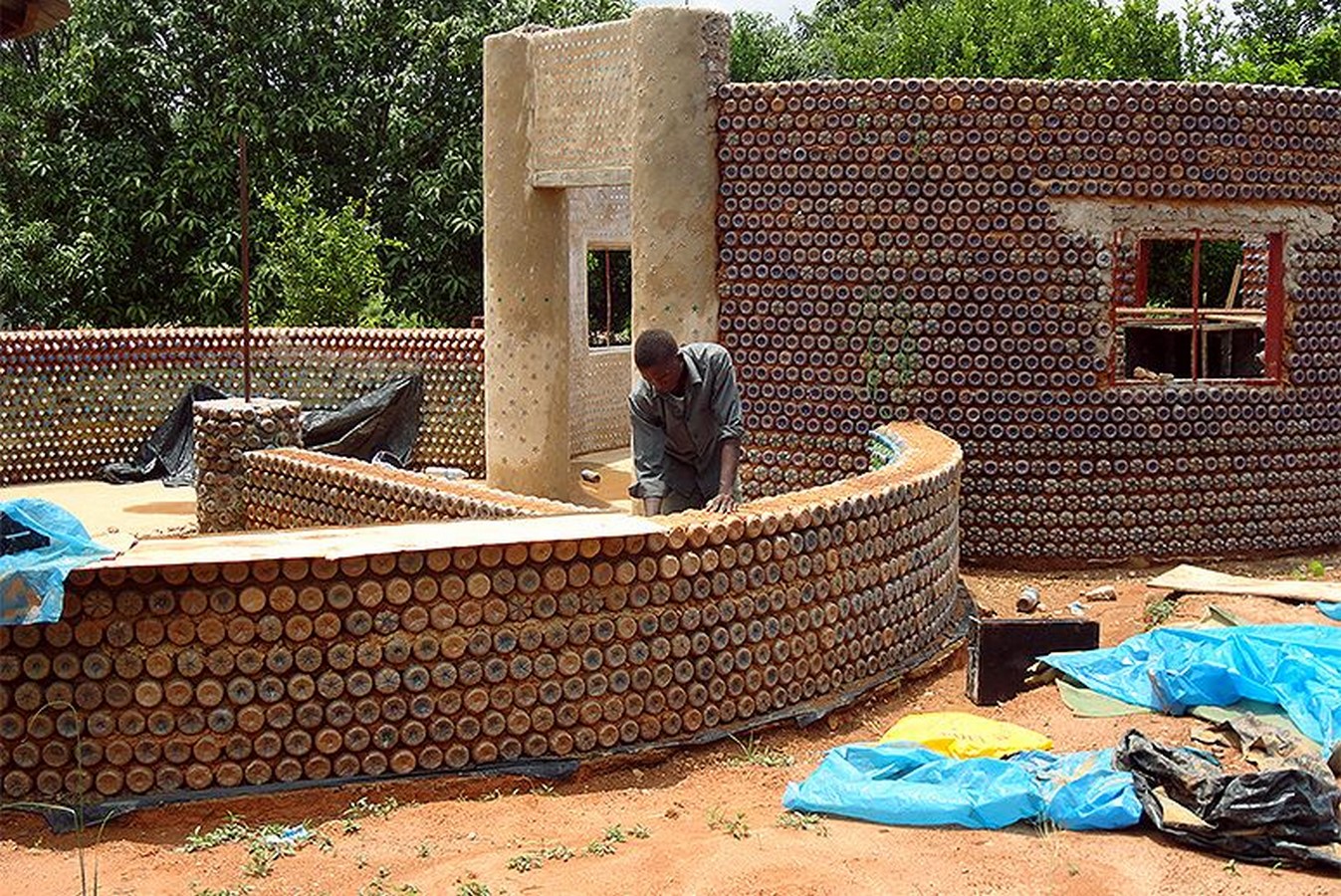
By this emphasis is laid on considering the reusability and recyclability of a building when nearing the end of its lifecycle. When trying to achieve energy efficiency thought must be given to providing the building with a second use- a second function.
The essential idea behind this school of thought is to give back to nature in the form that it was taken from it. By giving the building the ability to dismantle itself and be broken down into components that can be reused a significant amount of wastage of energy is reduced.
10. Net-Zero energy systems | Energy Efficient Buildings

What can be considered a good goal to achieve energy efficiency is the net-zero energy system where the building produces just as much energy as it consumes. This can be achieved by using less energy by employing various conservation techniques and by using onsite renewable energy generation sources to create the balance between energy spent, lost, and generated.



